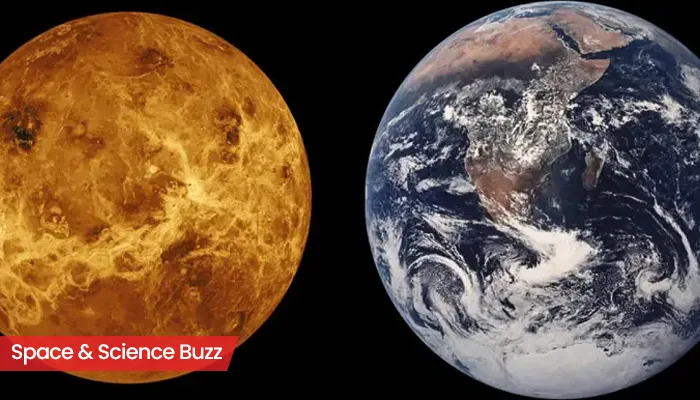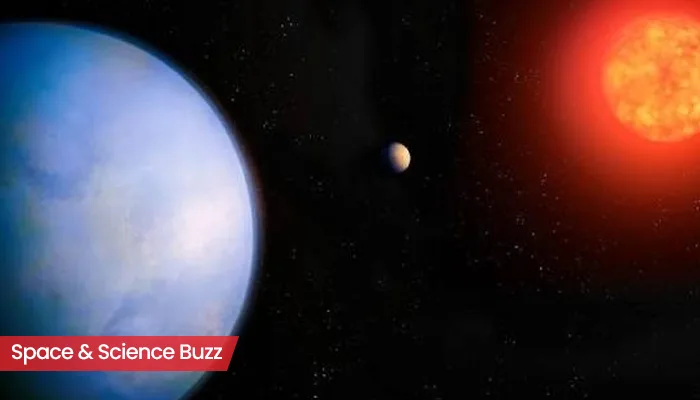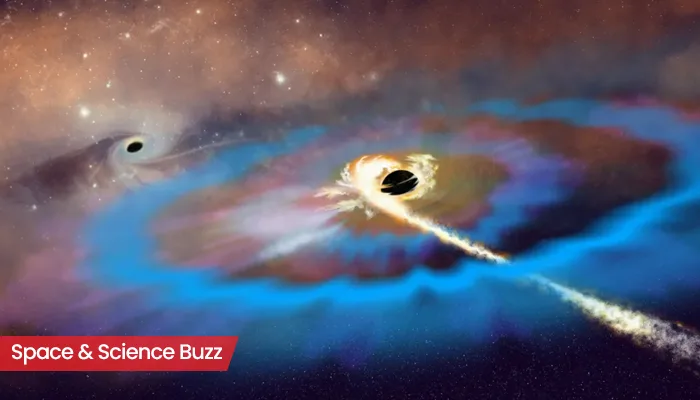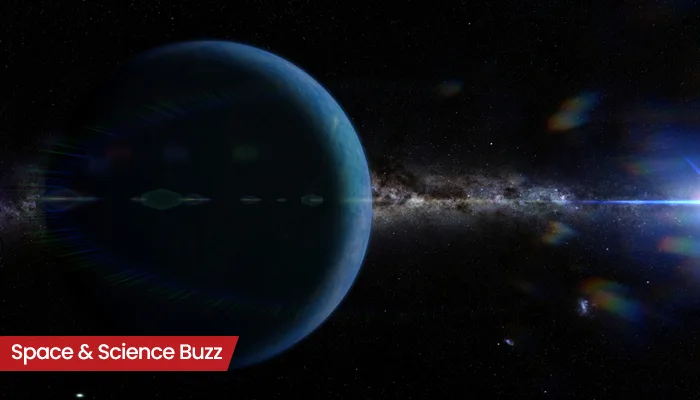Science & Space in 2024: Major Discoveries, Achievements, And Breakthroughs
- Sayan Paul
- 10 months ago
- 6 minutes read

From ambitious space missions to groundbreaking advancement in various science domains - this year will be remembered for ages to come.
The year 2024 has been a remarkable one for space exploration and science & technology. We are currently going through a transformative era, with breakthroughs in artificial intelligence, data science, medical, and space technology among others.
As 2024 is coming to an end, let's discuss some of the most significant milestones of the year that are shaping the future.
The First-Ever Complete Map of An Adult Fruit Fly’s Brain
In October this year - after vigorous research for over 10 years - a team of researchers unveiled the first-ever complete map of an adult fruit fly's (Drosophila melanogaster) brain. Published in Nature, the diagram contains nearly 140,000 neurons and more than 54.5 million synapses, making it the most complex map of a brain to date.
John Ngai, Ph.D., director of the National Institutes of Health (NIH) said about the same, "The diminutive fruit fly is surprisingly sophisticated and has long served as a powerful model for understanding the biological underpinnings of behavior. This milestone not only provides researchers a new set of tools for understanding how the circuits in the brain drive behavior but importantly serves as a forerunner to ongoing BRAIN-funded efforts to map the connections of larger mammalian and human brains.”
Scientists have mapped the entire neural network of the fruit fly.
— Massimo (@Rainmaker1973) December 5, 2024
50 million synapses between 139,000 neurons.pic.twitter.com/RddBCxlkFE
(Credit: Massimo)
World's First Private Spacewalk Mission
The highly anticipated Polaris Dawn mission was launched on September 10 with 4 crew members Jared Isaacman, Sarah Gillis, Anna Menon, and Scott Poteet. On September 12, Jared Isaacman and Sarah Gillis performed a spacewalk, making it the world’s first private spacewalk. The agency confirmed that the spacecraft had already reached its peak altitude of 1,400.7 kilometers or 870 miles, surpassing NASA’s 1966 Gemini 11 mission record.
The @PolarisProgram’s Polaris Dawn crew performed the first-ever spacewalk from Dragon, travelled farther from Earth than anyone since the Apollo program, and used @Starlink to connect with those back on Earth pic.twitter.com/GRv5AbtlNv
— SpaceX (@SpaceX) October 26, 2024
(Credit - SpaceX)
Through this mission, humans have reached the farthest location journeyed since the Apollo mission in 1972.
CRISPR Meets Generative AI
CRISPR or Clustered Regularly Interspaced Short Palindromic Repeats is a cutting-edge technology used to treat genetic disorders by cutting and editing specific parts of DNA strands.
Now, a few months ago, researchers at Profluent Bio implemented large language models (LLMs) to expand the functionality of CRISPR gene editors. The new technology is being called OpenCRISPR-1, which could make gene editing more accurate and safe. As Ali Madani, PhD, founder and CEO of Profluent Bio and senior author of the study, said in a statement, "Our LLMs, trained on billions of proteins in nature, are able to learn the sequence-to-function mapping of natural proteins and can be utilized to build functional proteins from scratch, such as OpenCRISPR-1."
To the incredible CRISPR community: Wishing you and your loved ones a joyful Christmas and a groundbreaking New Year! Here's to 2025 bringing even more transformative breakthroughs. pic.twitter.com/96Sqo3fRdW
— CRISPR News 🧬 (@CRISPR_News) December 24, 2024
(Credit: CRISPR News)
NASA's Largest Planetary Mission
Launched in October 2024, NASA’s ambitious Europa Clipper mission is designed to explore Jupiter's moon Europa. As per available data, Jupiter's moon is expected to contain a massive subsurface ocean under its icy upper crust. Thus, scientists are targeting Europa for astrobiological research.
On our way to Jupiter, getting ready to begin uncovering the secrets of its ocean moon Europa. Next up: a gravity-assist flyby of Mars in March. https://t.co/KX1yfEbQD2 pic.twitter.com/p7fA413MAi
— NASA Europa Clipper (@EuropaClipper) December 5, 2024
(Credit - EuropaClipper)
“Clipper’s primary science goal is to determine whether there are places below the surface of Europa that could support life. The mission’s three main science objectives are to understand the nature of the ice shell and the ocean beneath it, along with the moon’s composition and geology,” as mentioned on the NASA website.
The Oldest Known Fossilized Reptile Skin Found
As far as fossilized remains are concerned, mostly skeletal remains are there for reference - soft tissues are rare as they don't preserve well. However, recently, a group of paleontologists found what they believe to be the oldest known fossilized reptile skin. By analyzing the sample, researchers are getting insights into a distant evolutionary era that predates even the oldest dinosaurs. The findings have been published in the journal, Current Biology.
The reptile skin is an estimated 286-289 million years old.
SpaceX’s Eco-Friendly Solutions to Mitigate Satellite Launch Pollution
With rising space exploration, increasing environmental pollution has also been detected. Modern rockets use fossil fuels, which may raise Earth's upper atmospheric temperature. More satellite burning is promoting aluminum oxide levels, which can gradually upset the planet's thermal balance. The amount of space debris including old satellites falling back to Earth has doubled since the last decade. To mitigate pollution levels, SpaceX came up with innovative strategies this year. SpaceX's Starship test flight achieved a remarkable breakthrough as the launch tower's "chopstick" arms, named "Mechazilla" caught the returning first-stage booster. The 233-foot tall (equivalent to 20 story building) “super heavy booster” was blasted off attached to the Starship rocket and almost seven minutes later, made a picture-perfect controlled return to the same launch pad in Texas.
Mechazilla has caught the Super Heavy booster! pic.twitter.com/6R5YatSVJX
— SpaceX (@SpaceX) October 13, 2024
(Credit - SpaceX)
New Phase of Matter Discovered
Physicists from the Cavendish Laboratory in Cambridge have developed a new phase of matter - a two-dimensional Bose glass - this year, which challenges statistical mechanics. Also, it could lead to groundbreaking advancements in quantum computing.
The Bose glass has some glassy characteristics and has all of the particles localized within it. By overlapping several laser beams, the researchers created a quasiperiodic pattern which is like a typical crystal but not periodic. As Ulrich Schneider, Study Lead and Professor, Many-Body Physics, Cavendish Laboratory, University of Cambridge, explained, "A big limitation of large quantum systems is that we can’t model them on a computer. To accurately describe the system, we have to consider all its particles and all their possible configurations, a number that grows very quickly. However, we now have a real-life 2D example which we can directly study and observe its dynamics and statistics."

.WEBP)
.WEBP)
.webp)
.webp)


.webp)
.webp)
.webp)


